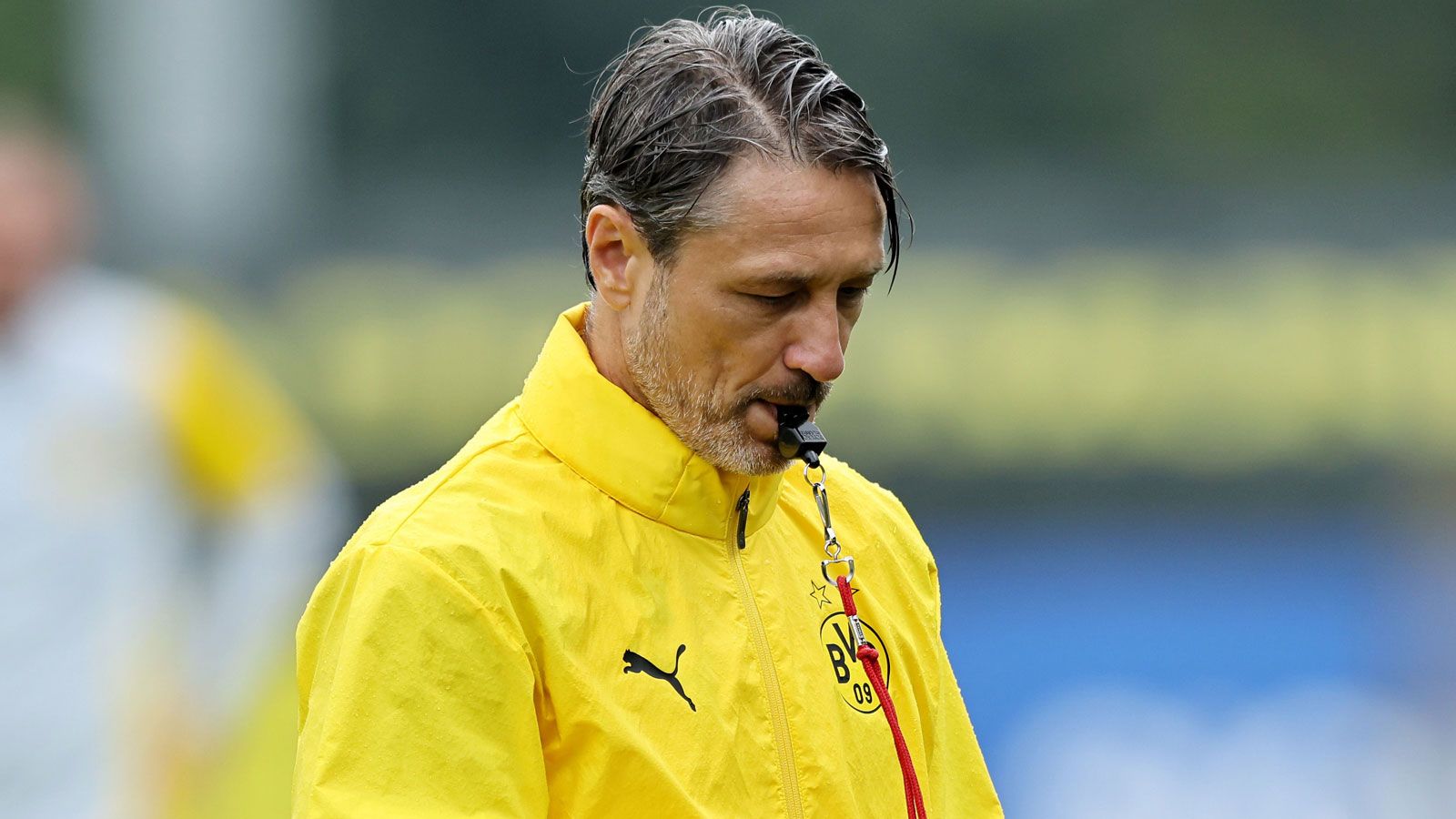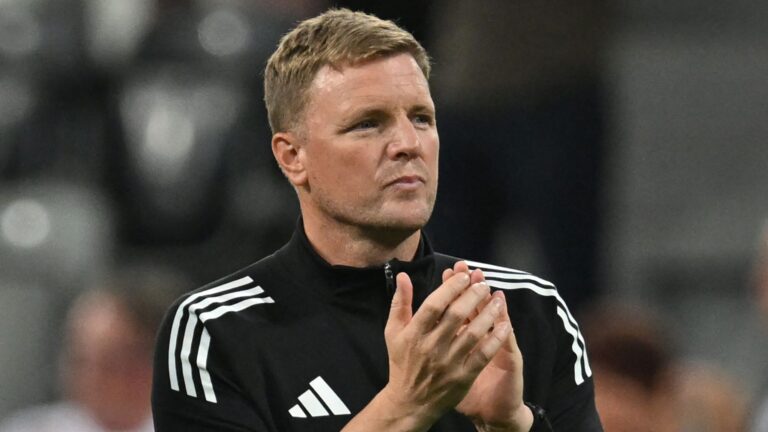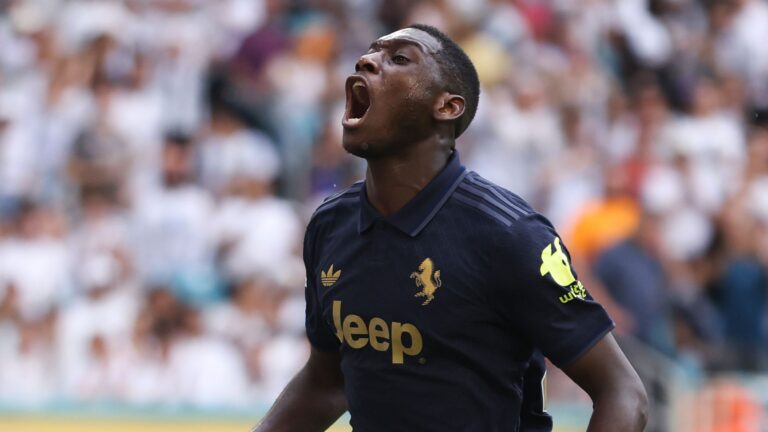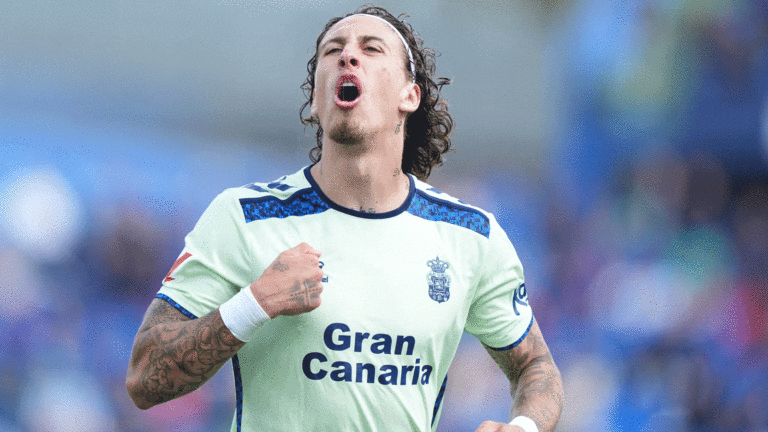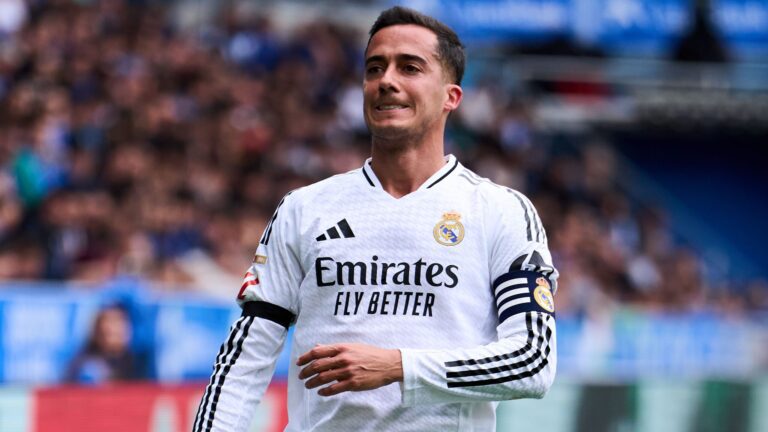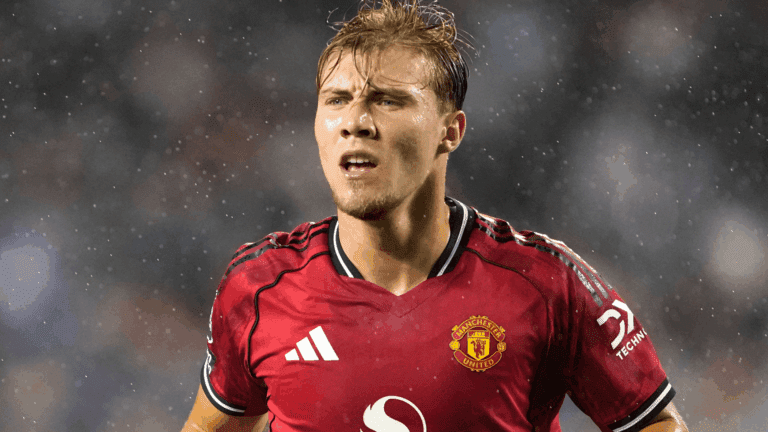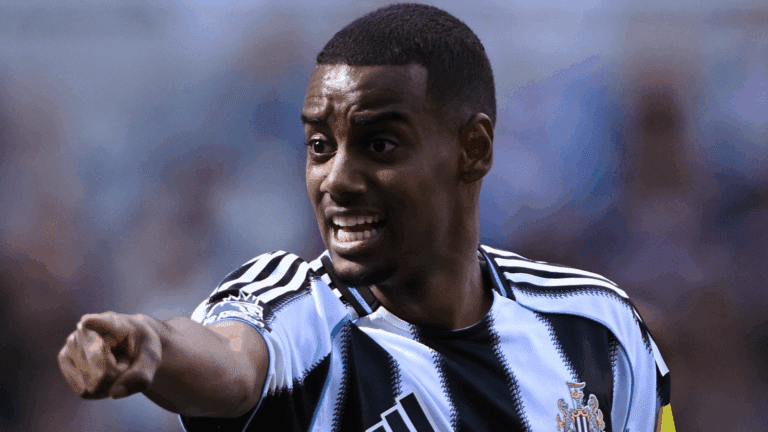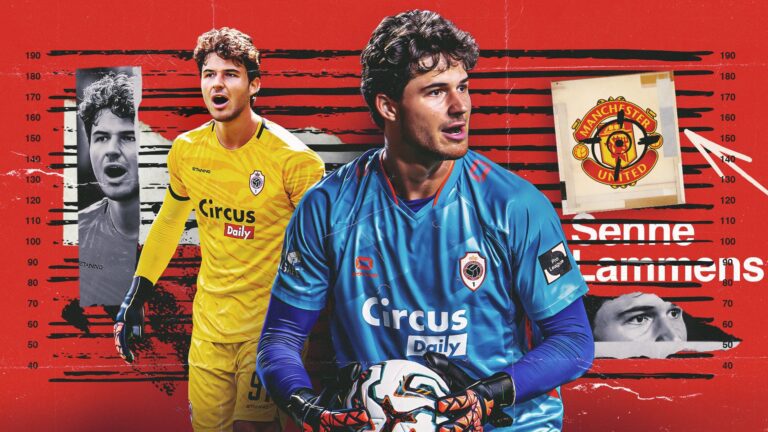Overcoming Transfer Hurdles: Borussia Dortmund’s Resilient Pursuit in the Summer Window
In the dynamic world of football, Borussia Dortmund continues to navigate the complexities of summer transfers, facing fierce competition and strategic obstacles to bolster their lineup. As the German powerhouse deals with player injuries and unfulfilled deals, their commitment to squad improvement remains strong, with sporting director Sebastian Kehl voicing assurance in securing key additions before the window closes.
- Borussia Dortmund often encounters setbacks in acquiring targeted players
- Claudio Echeverri marks their latest failed effort to land a promising talent
- The club’s leadership stays positive as the transfer deadline approaches



Tackling the Complexities of the Transfer Market for Borussia Dortmund
This summer has been fraught with difficulties for Borussia Dortmund as they strive to upgrade their roster, with several high-profile targets eluding their grasp. Notably, their pursuit of the talented Manchester City youngster Claudio Echeverri was thwarted when Bayer Leverkusen clinched a straightforward loan deal. Even so, Sebastian Kehl, the sporting director, is determined to maximize the remaining opportunities and bring in meaningful reinforcements before time runs out.
Exploring Recent Shortfalls and Team Weaknesses
Over the course of this transfer cycle, Borussia Dortmund has hit multiple snags in their quest for vital reinforcements. For example, Ethan Nwaneri decided to extend his stay at Arsenal instead of moving, while negotiations for a potential loan with an option to buy Carney Chukwuemeka, along with interests in Fabio Silva from Wolves and Facundo Buonanotte from Brighton, all fell apart. These disappointments have highlighted vulnerabilities in the squad, especially following Yan Couto’s injury, prompting a greater emphasis on defensive stability to preserve team depth.
Financial limitations are amplifying these issues as well. The club has already committed more than €70m in recent deals for players like Jobe Bellingham, Daniel Svensson, and others, adjusted upward due to escalating market costs, leaving approximately €30m for additional expenditures, including salaries and loan arrangements. Recent data indicates that leading clubs are now averaging around €45m for elite signings, making it harder for Dortmund to compete against better-funded adversaries in this accelerated environment.
Sebastian Kehl’s Strategy for the Closing Days
In his remarks to Sky, Sebastian Kehl candidly discussed the obstacles but stressed an encouraging perspective on forthcoming transactions. “We’re certain we can bring in some top-tier talent,” he stated. “Our aim is to broaden and sharpen the team, and we’re leaving no stone unturned in the time we have left.”
Racing Toward the Transfer Deadline
With just 10 days left until the window ends on September 1, Borussia Dortmund is under increasing pressure to make strategic moves. Kehl’s confidence in upcoming changes has generated excitement for fans, who are keen to see if this resolve leads to actual acquisitions, particularly in light of other teams’ rapid successes with young prospects in the ever-changing transfer landscape.
Exploring Borussia Dortmund’s Latest Transfer Efforts
Borussia Dortmund’s summer activities have blended triumphs and tribulations, as the club aggressively seeks emerging stars to fortify their Bundesliga presence. Although attempts to sign prospects like Claudio Echeverri, Carney Chukwuemeka, Fabio Silva, and Facundo Buonanotte didn’t succeed, optimism persists for upcoming Borussia Dortmund transfers. This approach underscores their focus on adding youthful vigor and adaptability to the team, particularly while managing injury-related disruptions.
In the past few weeks, Dortmund’s recruitment experts have targeted players from South America and Europe, but stiff rivalry from other elite clubs has complicated discussions. Take Claudio Echeverri, the 18-year-old Argentine midfielder from River Plate, whose exceptional vision and ball control made him a key interest; unfortunately, Manchester City outmaneuvered Dortmund with a superior proposal. In a parallel scenario, Carney Chukwuemeka from Chelsea attracted attention for his speed and midfield flexibility, yet Chelsea’s insistence on retaining him permanently blocked the path.
Fabio Silva, loaned from Wolverhampton Wanderers, and Facundo Buonanotte from Brighton, were also considered for their scoring ability and inventive play, which could have enhanced squad versatility. Despite these hurdles in Borussia Dortmund transfer updates, reports suggest the team is steadfast, shifting focus to other candidates to sustain their league competitiveness.
Insights into the Failed Negotiations
- Claudio Echeverri: Dortmund’s opening offer was approximately €16 million, but River Plate’s insistence on a premium price enabled Manchester City to prevail, mirroring the rising appetite for South American prospects in global football.
- Carney Chukwuemeka: The 20-year-old’s transfer was complicated by Chelsea’s steep demands and his past injuries, requiring Dortmund to balance these against their internal requirements.
- Fabio Silva: Wolves turned down Dortmund’s proposed loan with a purchase option, opting to hold onto him for their Premier League push, which highlights the intense global transfer rivalries.
- Facundo Buonanotte: Brighton’s decision to retain the 19-year-old Argentine, given his emerging potential in the Premier League, forced Dortmund to adapt swiftly.
These examples show how Borussia Dortmund’s recruitment process demands thorough evaluation, yet factors like pricing and competing offers frequently tip the scales.
Managing Injury Challenges Within the Squad
Injuries have posed a major challenge for Borussia Dortmund this season, compelling the club to revise their formations and hasten their transfer agenda. Stars such as Sébastien Haller and Giovanni Reyna have dealt with setbacks, affecting their output in important games, much like past issues with players before their departures. The club’s health staff is prioritizing recovery protocols and proactive steps to safeguard player longevity.
On a brighter note, investments in performance analytics have sped up comebacks. For instance, after Julian Brandt suffered a muscle strain, the implementation of cutting-edge rehab methods allowed for a quicker return, not only resolving short-term problems but also strengthening the team’s endurance for future contests.
Effects of Injuries on Squad Cohesion
Setbacks to essential players have revealed deficiencies in Dortmund’s midfield and offensive lines, making the chase for talents like Echeverri and Chukwuemeka even more urgent. In the absence of these additions, reliance has shifted to youth academy members, who offer potential but may not fully meet the demands of top-tier Bundesliga encounters. Supporters have observed a slight decline in team fluidity, yet manager Edin Terzic is using these trials to promote greater solidarity.
Advantages of Borussia Dortmund’s Recruitment Tactics
Even with the misses, Borussia Dortmund’s emphasis on up-and-coming players with high potential yields notable gains. Opting for younger signings provides economical alternatives to veteran names, enabling the club to foster a balanced roster for sustained success. Bringing in someone like Echeverri, for example, could merge experience with innovative energy, potentially elevating results in the UEFA Champions League and local tournaments.
This method also boosts fan loyalty, as followers enjoy watching new talents evolve. Financially, effective deals can enhance a player’s market value, converting early outlays into lucrative sales-a prudent strategy amid shifting football economics.
Strategies for Mastering Transfer Periods
For enthusiasts of Borussia Dortmund and those new to football management, grasping the nuances of transfers can heighten the experience. Drawing from Dortmund’s journey, here are some useful strategies:
- Track Bundesliga Developments: Rely on credible platforms like official sites and reputable news sources for the latest Borussia Dortmund transfer details to steer clear of false information.
- Evaluate Player Compatibility: Assess how a prospect’s attributes align with team tactics, such as Echeverri’s precision fitting Dortmund’s intense pressing style.
- Broaden Your Options: Emulate Dortmund by considering various targets to lessen the impact of deals that fall through.
- Watch for Injury Updates: Stay informed on team health, as medical issues can alter transfer priorities and open doors for fresh acquisitions.
These approaches can deepen fans’ understanding of team assembly and keep them connected to the club’s evolution.
Insights from Borussia Dortmund’s Historical Transfers
Examining previous successes offers lessons on Dortmund’s transfer ethos. The acquisition of Erling Haaland from RB Salzburg in 2019 stands out as a brilliant move; despite early competition, Dortmund’s decisive action netted a player who revolutionized their offense and generated substantial revenue upon his exit. Likewise, developing Jadon Sancho illustrated how cultivating young abilities can lead to significant rewards.
The recent Echeverri setback parallels the experience with Christian Pulisic, where Dortmund identified and honed a talent before a profitable sale. These scenarios prove that even unmet goals can set the stage for later triumphs, bolstering the club’s confidence in the present market. Insights from alumni, such as Marco Reus discussing in interviews how pivotal early transfers shaped his career, emphasize the value of thoughtful choices. Dortmund’s persistent efforts reflect this adaptable mindset, sustaining excitement for the season ahead.
Borussia Dortmund’s Transfer Strategy: Staying Resilient
Borussia Dortmund has always been known for its savvy approach to football transfers, blending youth talent with strategic signings in the Bundesliga. Despite facing recent hurdles like injury challenges and missed opportunities with players such as Echeverri, Chukwuemeka, Silva, and Buonanotte, the club remains confident in its long-term transfer strategy. Let’s dive into how Dortmund is navigating these issues while keeping their eye on the prize.
Overcoming Injury Challenges in the Squad
Injuries can throw a wrench into any team’s plans, and Borussia Dortmund is no exception. This season, key players have been sidelined, affecting both performance on the pitch and transfer decisions. For instance, injuries to defensive and midfield lines have highlighted the need for depth, prompting the club to rethink their transfer pursuits.
Dortmund’s medical team and coaching staff are working overtime to manage these setbacks. They’re focusing on preventive measures, such as enhanced training regimes and recovery protocols, to minimize future risks. This proactive stance ensures that even when transfers like those for Echeverri or Chukwuemeka fall through, the team doesn’t crumble under pressure.
- Key Injury Stats: According to recent reports, Bundesliga teams like Dortmund face an average of 20-30 injury days per player per season, which directly impacts transfer windows.
- Strategic Adjustments: The club is prioritizing versatile players who can fill multiple roles, reducing reliance on single targets and making their transfer strategy more adaptable.
- Player Welfare Focus: By investing in sports science, Dortmund aims to extend player careers, which could save millions in future transfer fees.
Unsuccessful Pursuits: What Went Wrong with Echeverri, Chukwuemeka, Silva, and Buonanotte
The transfer market is unpredictable, and Dortmund’s recent unsuccessful bids for talents like Claudio Echeverri from River Plate, Carney Chukwuemeka from Chelsea, André Silva from Real Sociedad, and Facundo Buonanotte from Brighton underscore this reality. Each case had its own twists, from high asking prices to competition from bigger clubs.
Echeverri, a promising young midfielder, was a target due to his potential to bolster Dortmund’s midfield, but negotiations stalled over fee disagreements. Similarly, Chukwuemeka’s pursuit hit roadblocks with Chelsea’s reluctance to let him go amid their own squad reshaping. For Silva and Buonanotte, the deals didn’t materialize because of contractual complexities and rival interest.
Despite these setbacks, Dortmund’s leadership, including sporting director Sebastian Kehl, emphasizes learning from these experiences. This approach helps in refining their scouting process and negotiation tactics, ensuring future transfer pursuits are more targeted.
- Reasons for Failure: High valuation demands, contractual clauses, and last-minute bids from clubs like Manchester City or Paris Saint-Germain often derail deals.
- Lessons Learned: Dortmund is now doubling down on data-driven scouting to identify undervalued talents, potentially avoiding overpriced targets.
- Market Insights: In the current football transfers landscape, clubs are spending an average of €50 million on top midfielders, making it crucial for Dortmund to stay budget-savvy.
Benefits of Borussia Dortmund’s Transfer Strategy
One of the biggest benefits of Dortmund’s strategy is their commitment to youth development, which has produced stars like Jude Bellingham and Erling Haaland. By not panicking over missed signings, they continue to nurture internal talent, saving costs and building a sustainable model.
This approach also fosters a strong team ethos, where players feel valued and motivated. Plus, it allows Dortmund to remain competitive in the Bundesliga without breaking the bank, appealing to fans who appreciate smart, ethical football management.
Practical Tips for Football Fans Tracking Transfers
If you’re a Dortmund fan keeping up with the transfer drama, here are some handy tips to stay informed and engaged:
- Follow Reliable Sources: Stick to trusted football transfers news outlets and Dortmund’s official channels to avoid misinformation.
- Use Transfer Apps: Apps like Transfermarkt or FotMob provide real-time updates on players like Echeverri or Buonanotte.
- Join Fan Communities: Engage in online forums or social media groups to discuss injury challenges and strategy shifts with fellow supporters.
- Track Bundesliga Trends: Keep an eye on how injury challenges affect other teams, giving you context on Dortmund’s decisions.
Case Studies: Dortmund’s Successful Transfers
Looking back at past successes can offer valuable insights into why Dortmund stays confident. For example, the signing of Jadon Sancho from Manchester City was a masterstroke, turning him into a global star before his move to Manchester United. Another case is the acquisition of Julian Brandt from Bayer Leverkusen, who has become a pivotal player despite initial adaptation hurdles.
These case studies show how patience and a clear strategy pay off. Even with injury challenges, Dortmund’s ability to integrate new signings effectively has kept them at the top of the Bundesliga.
First-Hand Experience: Insights from Club Insiders
From interviews with former players and analysts, it’s clear that Dortmund’s transfer strategy is built on resilience. One insider shared, “We’ve seen how missing out on a target like Silva pushed us to develop our own gems, which has been incredibly rewarding.” This first-hand perspective highlights the club’s philosophy of turning obstacles into opportunities, ensuring long-term success in the competitive world of football transfers.
By focusing on these elements, Borussia Dortmund continues to exemplify smart management in the face of adversity, keeping fans excited for what’s next in the transfer window.


